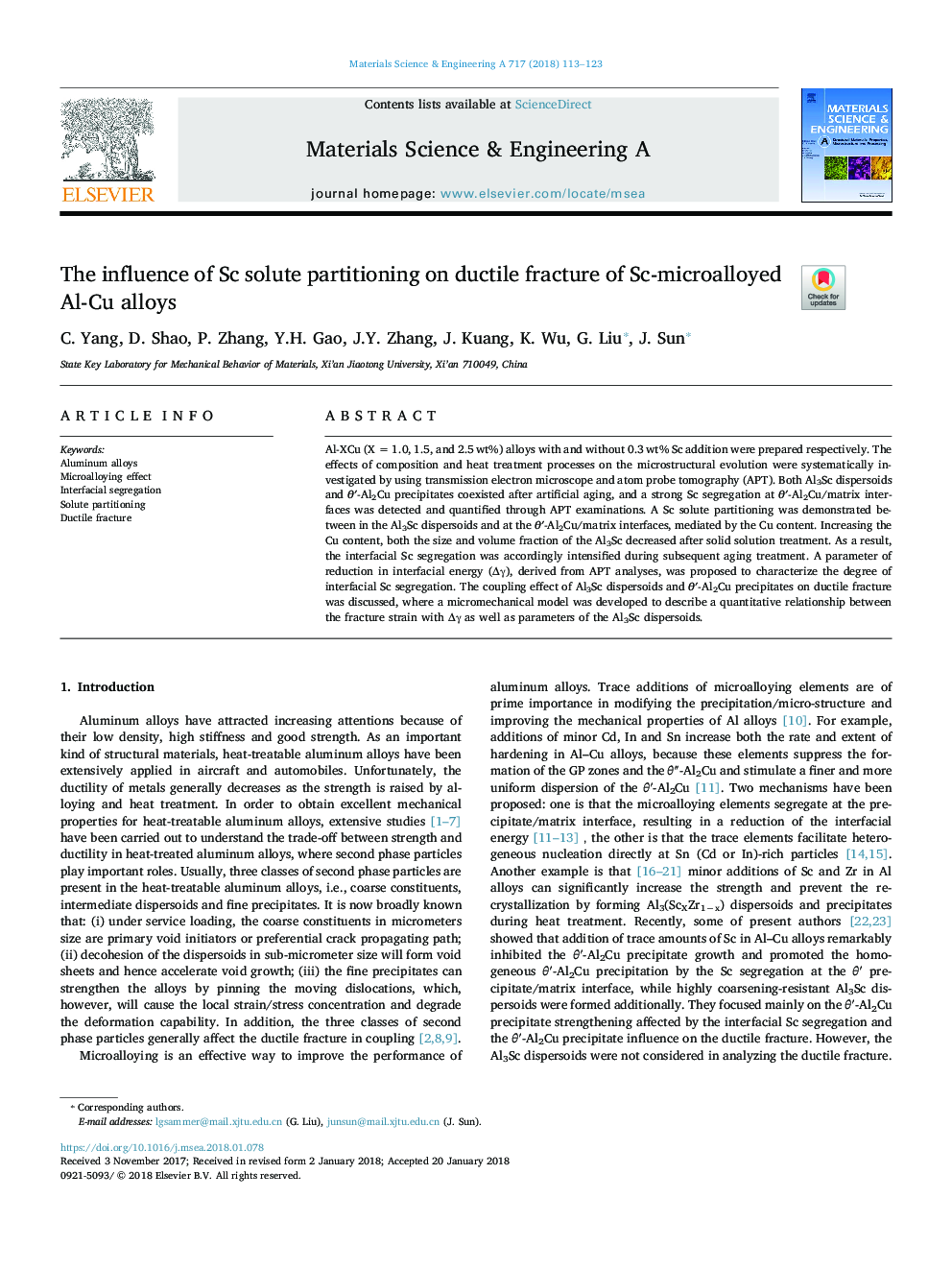| Article ID | Journal | Published Year | Pages | File Type |
|---|---|---|---|---|
| 7973387 | Materials Science and Engineering: A | 2018 | 11 Pages |
Abstract
Al-XCu (X = 1.0, 1.5, and 2.5â¯wt%) alloys with and without 0.3â¯wt% Sc addition were prepared respectively. The effects of composition and heat treatment processes on the microstructural evolution were systematically investigated by using transmission electron microscope and atom probe tomography (APT). Both Al3Sc dispersoids and θâ²-Al2Cu precipitates coexisted after artificial aging, and a strong Sc segregation at θâ²-Al2Cu/matrix interfaces was detected and quantified through APT examinations. A Sc solute partitioning was demonstrated between in the Al3Sc dispersoids and at the θâ²-Al2Cu/matrix interfaces, mediated by the Cu content. Increasing the Cu content, both the size and volume fraction of the Al3Sc decreased after solid solution treatment. As a result, the interfacial Sc segregation was accordingly intensified during subsequent aging treatment. A parameter of reduction in interfacial energy (Îγ), derived from APT analyses, was proposed to characterize the degree of interfacial Sc segregation. The coupling effect of Al3Sc dispersoids and θâ²-Al2Cu precipitates on ductile fracture was discussed, where a micromechanical model was developed to describe a quantitative relationship between the fracture strain with Îγ as well as parameters of the Al3Sc dispersoids.
Related Topics
Physical Sciences and Engineering
Materials Science
Materials Science (General)
Authors
C. Yang, D. Shao, P. Zhang, Y.H. Gao, J.Y. Zhang, J. Kuang, K. Wu, G. Liu, J. Sun,
